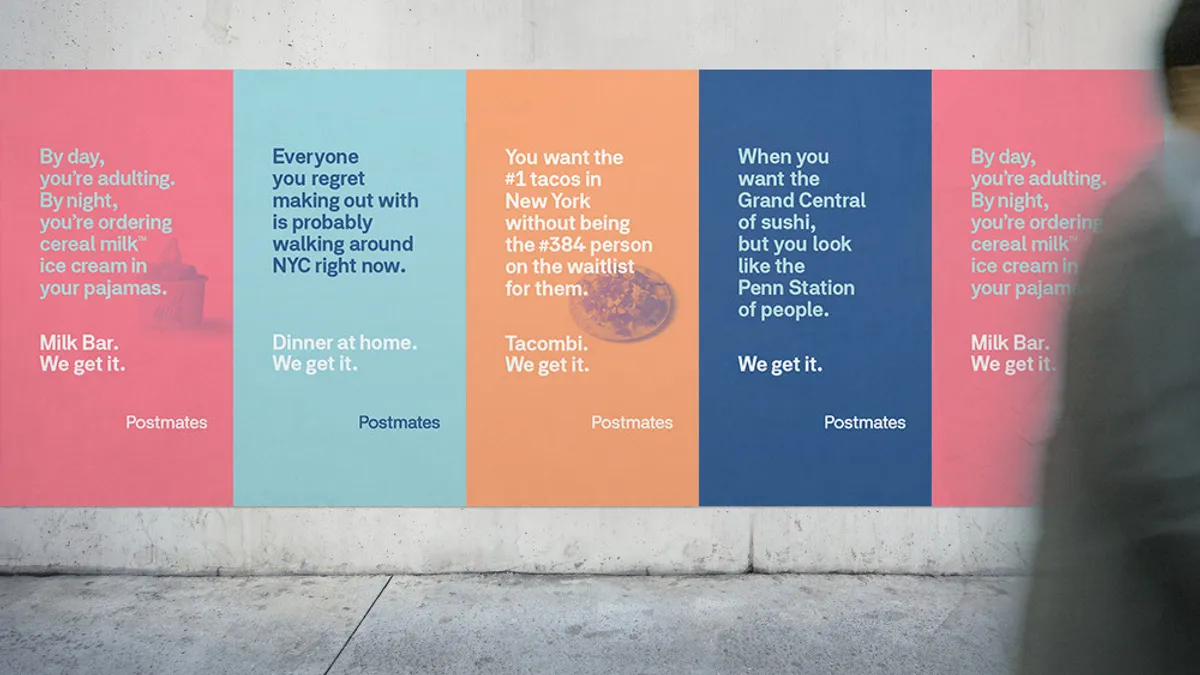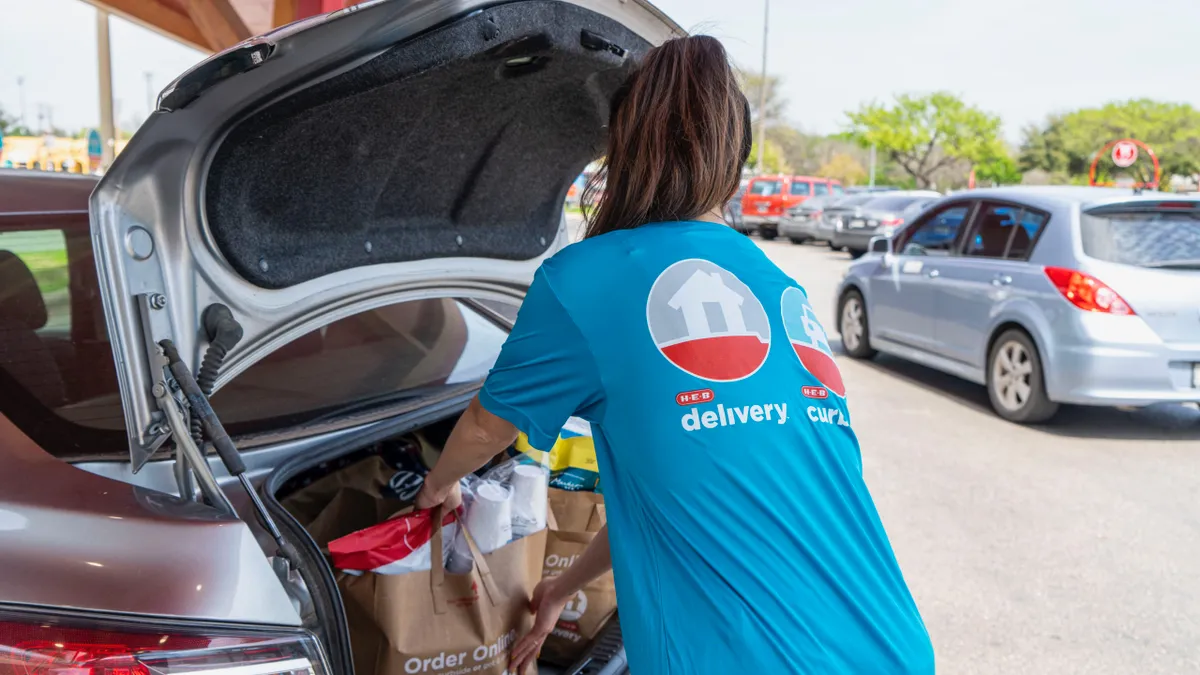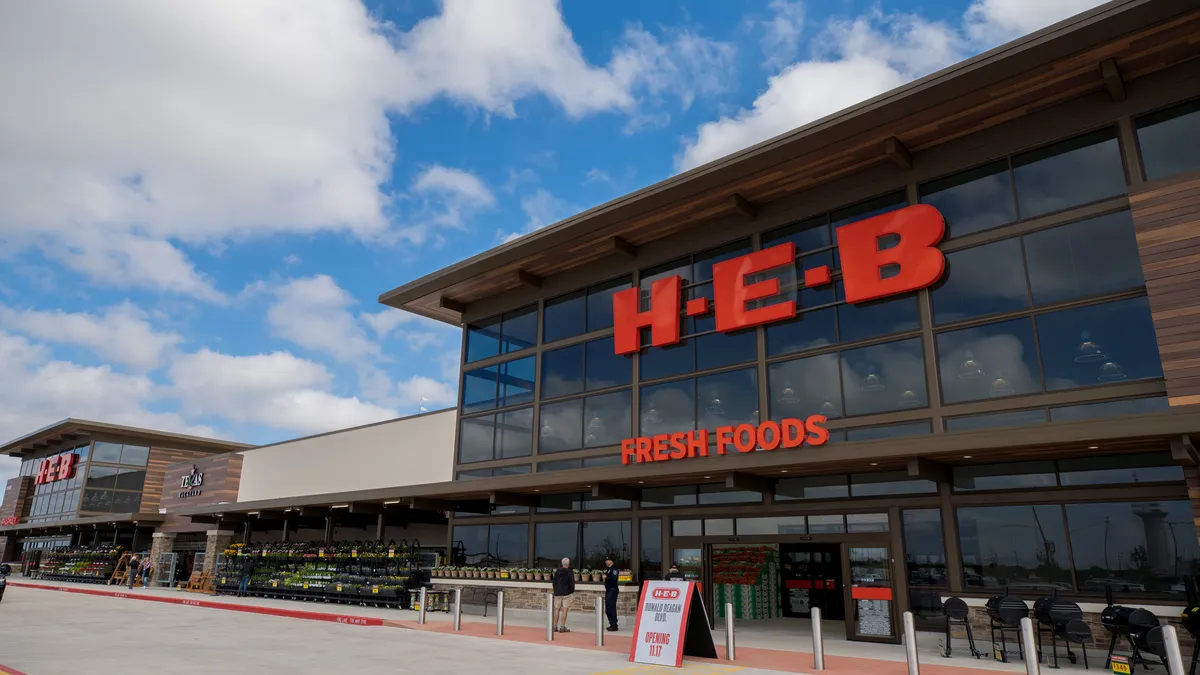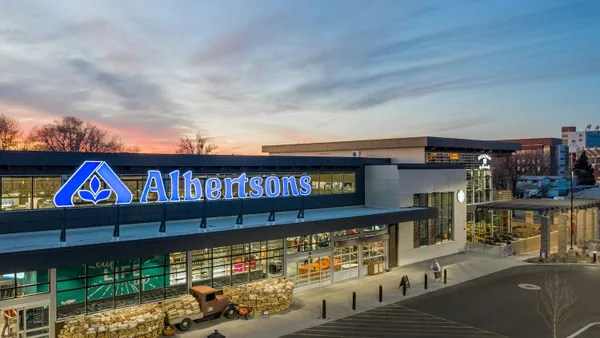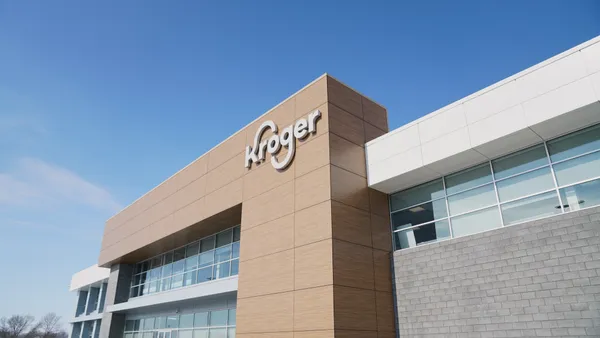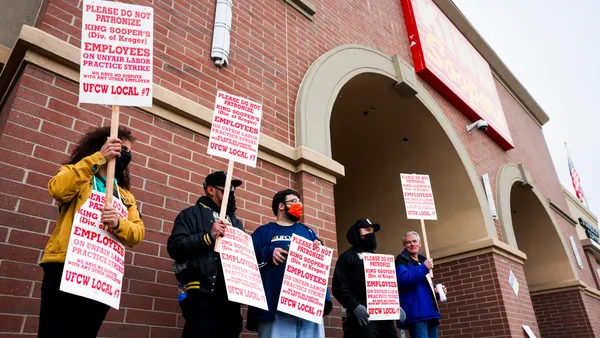Dive Brief:
- Delivery service Postmates has secured $300 million in funding, led by Tiger Global Management. The deal includes a board position for Tiger Capital’s Scott Schleifer. Postmates currently provides on-demand service to more than 250,000 merchants in 400 U.S. cities and Mexico City.
- According to Postmates, the company’s technology infrastructure improved its brick-and-mortar partners’ retail sales by four times in 2017. The company’s gross profit growth averaged more than 250% in the past four years, with gross margin improvement of nearly 50%.
- In April, Postmates inked a deal with Walmart to provide home grocery delivery in Charlotte, N.C.
Dive Insight:
There is no bigger vote of confidence in a business model than a major round of funding, and $300 million for Postmates illustrates how just how confident venture capitalists are in the on-demand delivery company.
Postmates’ news follows the $140 million funding round it achieved in 2016, indicating that the honeymoon phase with this company isn't over yet. Fortune reports that the latest deal values Postmates at $1.2 billion and CEO Bastian Lehmann has hinted at going public in 2019.
But Postmates is hardly alone in this space — DoorDash, for one, just procured $250 million and is valued at $4 billion. Then there’s Uber Eats (which experienced 200% growth last year), GrubHub (whose stock has doubled since last year), Instacart, Shipt and Amazon all jockeying to win the race for the last mile. According to The Spoon, with Postmates’ news, at least $1.2 billion in new funding has been raised for food delivery startup companies this year alone and their simultaneous growth will have big implications for both the grocery and restaurant channels.
In the restaurant space, GrubHub makes up 52% of the food delivery market. Uber Eats has 20% market share, DoorDash is at 14% and Postmates is at 9%. By 2022, 11% of U.S. restaurant sales – or $32 billion – are expected to come from delivery orders, up from an estimated 6% last year, according to Morgan Stanley Research.
At this point, adoption of online grocery shopping is moving slower than other consumer categories, according to NPD Group, but online grocery shopping is projected to achieve 70% penetration and $100 billion in sales by 2025.
Such intensifying third-party delivery competition could be a blessing or a curse for grocery retailers. It can certainly help them scale a service that is increasingly in demand, but it will also further blur the lines of foodservice and add a significant amount of competitive pressures.
Meanwhile, for Instacart and Shipt, the leading grocery delivery companies, the growth of services like Postmates could threaten their business. Although Postmates and DoorDash have limited grocery exposure, that will likely increase as more consumers get on board with online shopping.
According to Retail Leader, Postmates, as the least expensive subscription model, doubled its total subscribers year-over-year. This latest round of funding is expected to further expand its reach, and the company has a goal of covering over 70% of U.S. households by the end of this year. It also plans to roll out a new point-of-sale system that should increase efficiencies for its retail partners, and invest in R&D to “devise new last-mile mobility solutions,” according to a news release. What that could mean – driverless vehicles, robots or drones, perhaps – is anyone’s guess, but the industry will probably find out sooner rather than later.


